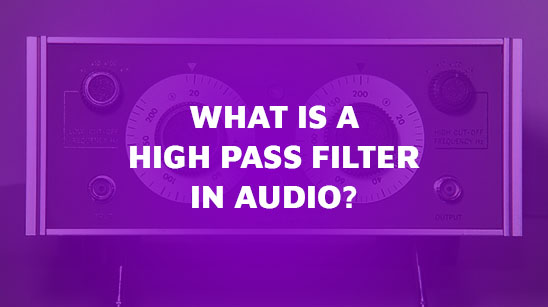Microphone impedance is about how a mic handles electric current. Think of it as a hurdle race, where the hurdles are the impedance. The higher the hurdles, the more challenging it is for the current to get through.
Why should you care? Well, it’s because impedance shapes your sound recordings. It sets the tone and quality of your audio. Imagine painting a picture. The choice of your brush can affect how your painting turns out. The same goes for your microphone and its impedance.

If you’ve wondered why your recordings don’t sound as good as you’d like, impedance could be the secret ingredient. Whether you’re a pro in a studio or starting a bedroom podcast, understanding microphone impedance can improve your audio.
It’s easier than you think and can make a real difference to your audio output.
What is Microphone Impedance?
Inside a mic, you have an audio circuit. This circuit is where the magic happens. It’s where the sound you make gets converted into an electric signal. This signal then travels through the circuit to reach the output.
Here’s where impedance comes in. It controls how easily this electrical signal moves through the circuit. High impedance means the signal has a more challenging time getting through. It’s like trying to run through thick mud – it’s possible, but hard work!
On the other hand, low impedance is like running on a smooth track – the signal can zip right through.
Sure, here’s a simple comparison table that outlines the differences between low and high microphone impedance:
| Impedance Microphones | Low Impedance Microphones | High Impedance Microphones |
|---|---|---|
| Signal Strength | Strong signal | Weaker signal |
| Cable Length | Can use long cables without loss of quality | Best used with short cables to prevent quality loss |
| Sound Quality | Generally better, especially over distance | Can degrade, especially over distance |
| Compatibility | Generally better, especially over distance | Can degrade, especially over distance |
| Price | Typically more expensive | Generally cheaper |
Remember, both types have their uses. High-impedance microphones are ideal for specific applications such as harmonica playing or achieving vintage sounds. Professional audio work favors low-impedance microphones for superior sound quality, especially for long cable runs.
So, the level of impedance in your mic can shape your sound. It affects volume, tone, and the sound’s maximum travel distance before quality loss. That’s why understanding impedance is so essential for anyone looking to create great sound recordings.
A wrong impedance level can result in poor sound quality and ruin your recordings. Bad sound quality may be due to speaker delay or other imperfect conditions, but it can also result from impedances that do not match.
In the next section, let’s explore how impedance affects your microphone’s sound quality and performance.
How Does Microphone Impedance Impact Sound Quality and Performance?
Microphone impedance can have a significant impact on your sound recordings. It’s not just about volume or tone; it can also affect frequency response and noise levels. Here are some key ways impedance shapes your microphone’s sound:

1) Volume and Tone
As mentioned earlier, high impedance can result in a weaker signal. Your recordings may sound quieter or have less overall volume than low-impedance microphones. Additionally, the tone of your recordings can also be affected by impedance.
High-impedance mics tend to have a brighter sound, while low-impedance mics can have a warmer tone.
2) Frequency Response
Impedance can also impact the frequency response of your microphone. High-impedance microphones have a more comprehensive frequency range and can capture more detail at higher frequencies. In comparison, low-impedance mics may not be able to pick up as much detail in higher frequencies.
3) Noise Levels
Microphone impedance can also affect the noise levels in your recordings. High-impedance mics are more prone to picking up electrical interference, leading to a noisier recording.
On the other hand, low-impedance microphones are designed to reject this interference and produce cleaner recordings. So, you can connect your microphone speaker to monitor it as a low impedance.
But how to connect it? Click the above link to read this section.
How To Choose The Right Microphone Impedance?
When selecting a microphone, impedance is an essential factor to consider. Here are five factors you should take into account and some tips for making an informed decision:
Purpose: The use case of the microphone is crucial. Low-impedance microphones are ideal for studio recording or live performances, offering superior sound quality and signal resistance. However, high-impedance microphones may be preferred for harmonica playing or capturing a vintage sound.
Cable Length: Opt for a low-impedance microphone if you need to use long cables. High-impedance microphones can lose signal quality over long distances.
Equipment Compatibility: Ensure the microphone’s impedance matches your audio equipment. Using a high-impedance microphone with low-impedance equipment (or vice versa) can result in poor sound quality.
Frequency Response: Consider the frequency response of the microphone. High-impedance microphones might struggle with high-frequency sounds, especially over long cable runs. This could result in muffled audio or loss of clarity. To avoid this situation from happening, you can sound connect to the projector.
Budget: Generally, low-impedance microphones are more expensive than high-impedance ones. If budget is a constraint, high-impedance microphones could be a more affordable option.

Tips and Recommendations
Always check the specifications of the microphone before purchasing. Look for the impedance rating, usually measured in ohms (Ω).
- To check microphone compatibility, consult a pro or the manufacturer.
- Remember, while impedance is essential, it’s just one of the factors to consider when choosing a microphone.
- Other factors like polar pattern, sensitivity, and frequency response are equally important.
Conclusion – Microphone Impedance
To conclude, understanding microphone impedance is critical to achieving high-quality sound recordings. It significantly impacts a microphone’s frequency response, signal strength, and performance. High-impedance microphones can lose high-frequency sounds and suffer from signal degradation over long distances.
In contrast, low-impedance microphones offer superb sound quality and maintain signal strength over long cable runs. When choosing a microphone, consider its purpose, cable length, compatibility, frequency response, and budget.
Remember, impedance is just one part of the puzzle. Other factors such as polar patterns, sensitivity, and the microphone’s build also impact its performance. So, equip yourself with knowledge, make informed decisions, and let your recordings speak for themselves.



